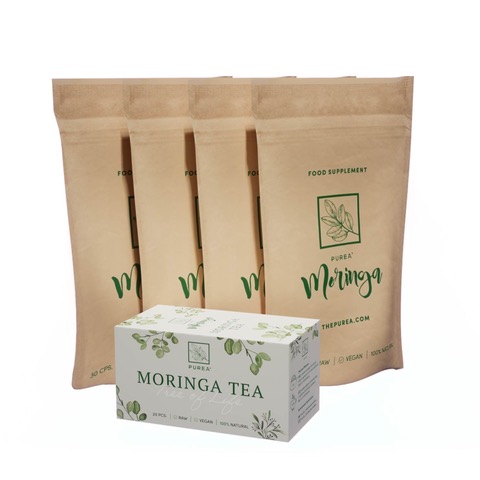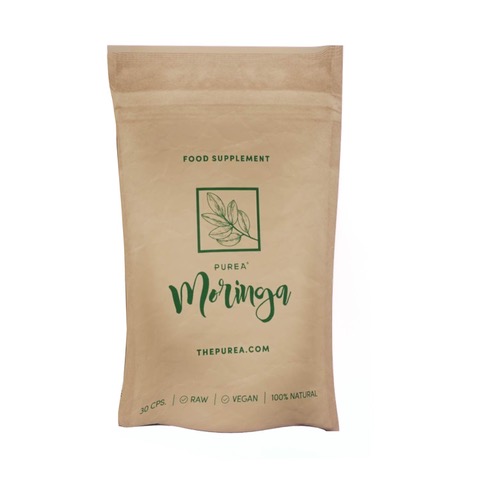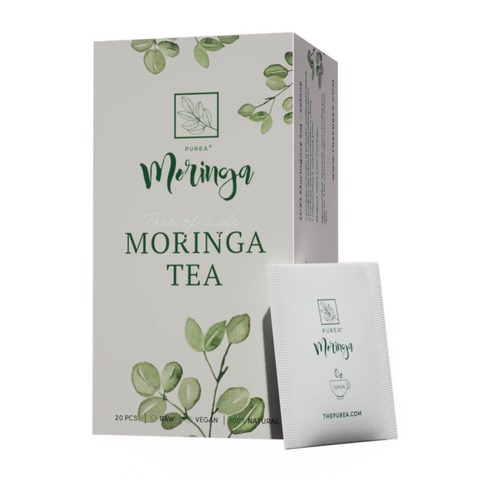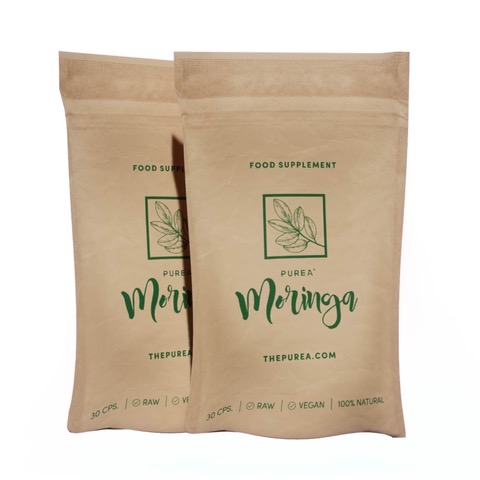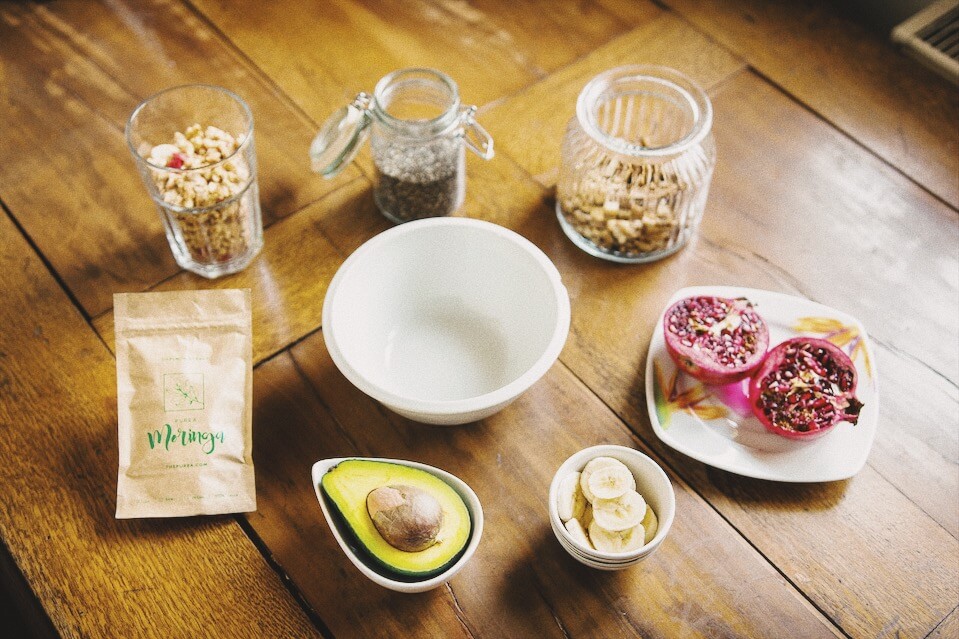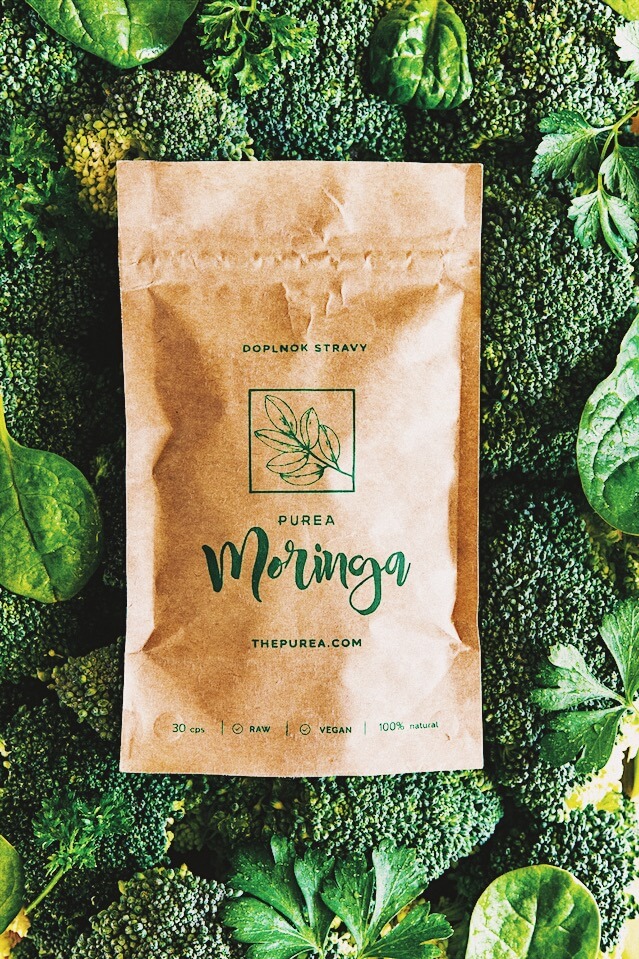
Moringa oleifera is nowadays more and more often referred to as a superfood. This is because it is a tree-like plant which can be rich in nutrients, antioxidants and many other health-promoting substances. This so-called tree of life originates from India and, despite its incredible benefits, the fact should be taken into account that its high content of active chemicals can also cause side effects. Before consuming Moringa, we recommend that you gain sufficient information about all of its properties.
WHAT IS MORINGA?
Moringa oleifera is a small tree which originated in India but now grows in many parts of the world. Every part of this tree is considered edible and the plant is characterised by the long pods from which its name is derived. The word “murungai” in Tamil means “twisted pod”.
Moringa has several different names around the world. Due to the similar taste of the raw Moringa root and horseradish, it is sometimes referred to as the “horseradish tree”. In Ayurvedic medicine it is known as “shigru”, while in Spanish it is referred to as “jacinto”.
The Moringa tree’s ability to grow in different climatic conditions is exceptionally useful – especially in subtropical areas. Moringa oleifera grows in virtually all countries with populations suffering from food shortages and malnutrition. This is why it is being hailed as the food of the future and could become a major part of a comprehensive plan to alleviate food shortages across the planet.
It is believed that Moringa was first discovered in northern India and may have been used in local medicine as far back as around 5,000 years ago. There is also evidence that it was used by the ancient Greeks, the Romans and the Egyptians. Among others, it has earned such designations as the “Tree of Miracles”, the “Divine Tree” and the “Miracle Tree”.
It is also important to note that a total of 13 different species of Moringa occur in nature. In this article we will discuss the species Moringa oleifera and use only the generic name Moringa.
POTENTIAL BENEFITS OF MORINGA
The valuable properties which can be useful in the fight to combat global hunger have led people to believe that this plant is beneficial for all. Nevertheless, this plant is available in multiple consumable forms, including capsules, teas, and other preparations. The leaves are considered to be the part of the Moringa with the highest nutrient content and can therefore be processed into nutritional supplements. A large proportion of the world’s population is now considered “overfed but undernourished” and Moringa can therefore be of enormous benefit to people in the developed world too. At the same time, however, it is important that you familiarise yourself with the following information, especially if you are considering consuming the root and stem of this plants.
Some of the most important characteristics of Moringa may include:
1. RICH IN NUTRIENTS
As we mentioned above, Moringa can be a rich source of antioxidants and vitamins, which include:
Most important vitamins: A, C, D, E, K, B1, B2, B3, B5, B7, B9 and B12.
Most important minerals: Calcium, magnesium, fluorine, molybdenum, iron, manganese, sodium, potassium, selenium, phosphorus, zinc, sulphur and chromium.
You may have come across claims that Moringa can contain more protein than yoghurt, more potassium than bananas, more calcium than milk and more vitamin C than oranges. While this may technically be true, it is important to note that this is a comparison of elemental content per gram of weight, not per unit of volume. Since Moringa leaves are relatively light, 100 grams of leaves of this plant would have a significantly larger volume than 100 grams of oranges.
In addition to this, Moringa can be a good natural source of the above-mentioned nutrients, but one cup of fresh Moringa leaves can provide only 10-20% of the recommended daily allowance. Therefore, if we wanted to use Moringa as a “superfood” under the conditions in which we live, we would have to consume it in extremely high quantities.
2. POSSIBILITY OF REDUCING INFLAMMATION?
If your diet is not at least relatively balanced at the moment, Moringa could represent an extremely valuable source of nutrients for you. Of course, it also has other properties which can be advantageous to people all over the world. In fact, the high levels of antioxidants contained in Moringa leaves can reduce and prevent certain types of inflammation.
It has been found that Moringa can contain flavonoids such as quercetin, but also beta-carotene, vitamin C and chlorogenic acid. Quercetin can sometimes be used as a natural antihistamine – an anti-inflammatory – as it can stabilise histamine production in the body. Chlorogenic acid is found in greater amounts in coffee, for example, and has been proven in some laboratory tests to be able to stabilise blood sugar levels.
Since imbalanced blood sugar levels are linked to the development of diabetes, inflammation and other problems, stabilising blood sugar can be an important step in the process of reducing inflammatory diseases.
Again, however, relatively larger quantities of Moringa need to be consumed regularly to achieve long-term results. Nevertheless, it can be useful as part of a regular diet and a generally healthy lifestyle.
3. POSSIBLE POSITIVE EFFECTS ON CHOLESTEROL LEVELS
The plant may in fact contain biochemical compounds which may be important, especially now that research undermining the effectiveness and safety of statins has appeared on the scene. Chris Kresser stated that:
– Statins do not reduce the risk of death in 95% of the population, even in healthy men with no previous heart problems, women of any age group or the elderly.
– Statins reduce mortality in young and middle-aged men with experience of such a problem, but their benefit is small and not without significant adverse effects, risks and costs.
– When it comes to preventing heart disease, aspirin achieves the same effect as statins and is 20 times more cost-effective.
Many foods which help to reduce inflammation in the body are often found to have a positive effect on blood cholesterol levels. A diet high in antioxidants and vegetables and low in sugar is of course beneficial in any situation, but research in both humans and animals has shown that the content of substances in Moringa can be extremely effective in this regard.
4. BENEFITS FOR BREASTFEEDING MOTHERS?
Several sources report that Moringa contains compounds which may have a positive effect on milk volume during breastfeeding. It should be noted that not enough studies have been conducted on this topic.
5. IMPROVEMENT OF ENERGY PERFORMANCE
An extremely large number of people think that Moringa contains substances which increase energy levels in the human body. A lot of people in online discussion forums claim to have experienced a significant increase in their energy levels after consuming Moringa . However, despite this fact, few scientific studies have been conducted on this topic, but the nutrients present in Moringa could also have an impact on this area of health.
WHAT TO BEWARE OF
Like many medicinal plants¸ Moringa too is characterised by the fact that, while the chemical compounds in some parts of it are beneficial, others may cause undesirable effects. This is true, for example, of elderberry, whose berries are excellent at boosting the immune system, while its leaves and stems contain cyanogenic glycosides which are toxic to humans. The leaves of Moringa oleifera are generally considered safe and edible, but some concerns have been raised in relation to the stems and roots, which can lead to harmful effects, especially in women.
HOW TO TAKE MORINGA
The effects of the possible nutrients contained in Moringa seem to be strongest when its parts are eaten fresh. This tree grows in most types of climates and is therefore extremely easy to grow as a natural nutritional supplement. However, Dr. Mercola states that Moringa leaves are very small and time-consuming to harvest.
SUMMARY
Nowadays, because we live hectic fast-paced lives, because we don’t play sports and because our diet is poor, we are at risk of various diseases. That is why this food could be really important for us – it can potentially help us with various problems and can be useful in preventing various diseases.
